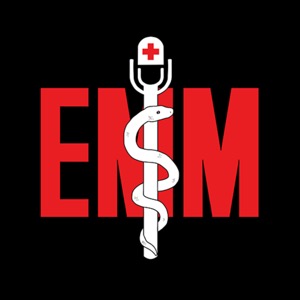Episode 950: Ultrasound Pulse Check During Cardiac Arrest
Emergency Medical Minute - A podcast by Emergency Medical Minute - Mondays

Contributor: Aaron Lessen, MD Educational Pearls: Point-of-care ultrasound (POCUS) is used to assess cardiac activity during cardiac arrest and can identify potential reversible causes such as pericardial tamponade Ultrasound could be beneficial in another way during cardiac arrest as well: pulse checks Manual palpation for detecting pulses is imperfect, with false positives and negatives Doppler ultrasound can be used as an adjunct or replacement to manual palpation for improved accuracy Options for Doppler ultrasound of carotid or femoral pulses during cardiac arrest: Visualize arterial pulsation Use color doppler Numerically quantify the flow and correlate this to a BP reading - slightly more complex Doppler ultrasound is much faster than manual palpation for pulse check Can provide information almost instantaneously without waiting the full 10 seconds for a manual pulse check The main priority during cardiac arrest resuscitation is to maintain quality compressions If pulses are unable to be obtained through Doppler within the 10-second window, resume compressions and try again during the next pulse check References Cohen AL, Li T, Becker LB, Owens C, Singh N, Gold A, Nelson MJ, Jafari D, Haddad G, Nello AV, Rolston DM; Northwell Health Biostatistics Unit. Femoral artery Doppler ultrasound is more accurate than manual palpation for pulse detection in cardiac arrest. Resuscitation. 2022 Apr;173:156-165. doi: 10.1016/j.resuscitation.2022.01.030. Epub 2022 Feb 4. PMID: 35131404. Summarized by Meg Joyce, MS1 | Edited by Meg Joyce & Jorge Chalit, OMS3 Donate: https://emergencymedicalminute.org/donate/
